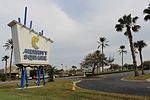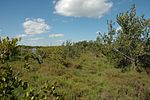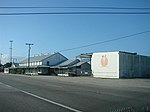Angel City, Florida
Merritt Island, Florida
Angel City is a populated place on the Horti Point peninsula of Merritt Island, in Brevard County, Florida, United States. Angel City had a post office between 1927 and 1931. It is believed that the community was named for an early settler, John Angel. Hattie Worley, wife of Oscar Worley, the bridge tender, named Angel City after the first homesteader, Captain Angel from Rhode Island.
Excerpt from the Wikipedia article Angel City, Florida (License: CC BY-SA 3.0, Authors).Angel City, Florida
South Banana River Drive,
Geographical coordinates (GPS) Address Nearby Places Show on map
Geographical coordinates (GPS)
| Latitude | Longitude |
|---|---|
| N 28.344444444444 ° | E -80.660555555556 ° |
Address
South Banana River Drive 730
32952
Florida, United States
Open on Google Maps






